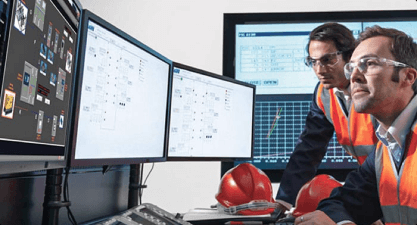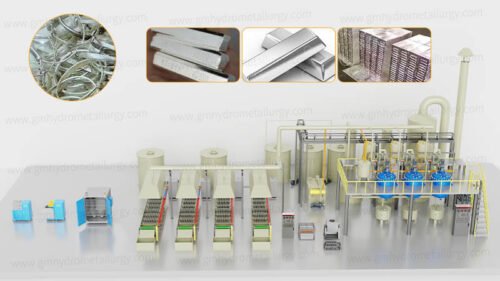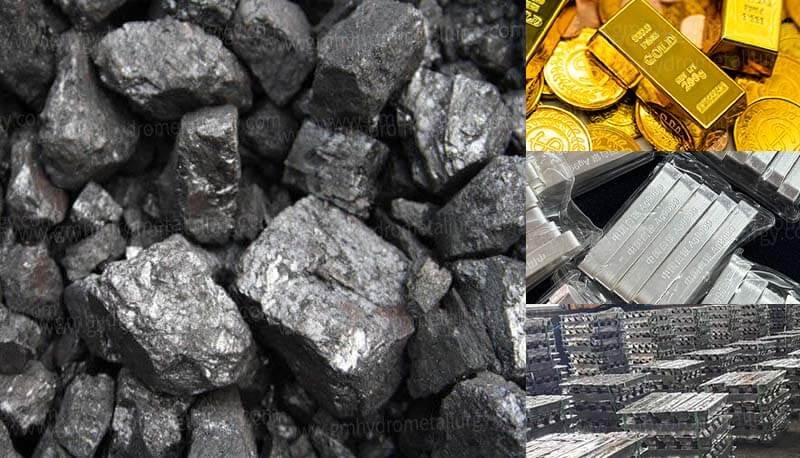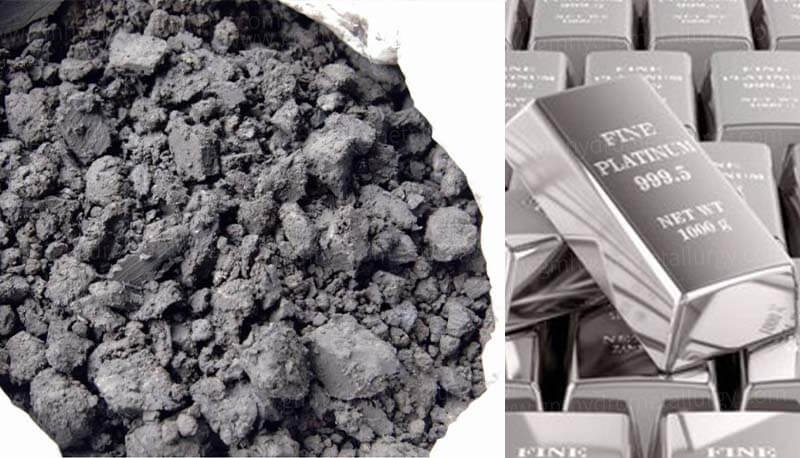Recovery of Pt Pd and Rh from Spent Automotive Exhaust Catalysts
Why Recovery of Pt Pd and Rh from Spent Automotive Exhaust Catalysts?
Due to the unique purification capabilities of platinum group metals (PGMs) in automotive exhaust systems, over 60% of the global annual consumption of platinum (Pt), palladium (Pd), and rhodium (Rh) is used in automotive exhaust purification catalysts. Spent automotive exhaust catalysts are regarded as “mobile platinum group metal mines,” and the regeneration and recovery of PGMs from these materials have become a major secondary resource recycling industry worldwide.
Raw Material&Final Product

Three Way Catalysts

Ozone Catalyst

Activated Alumina

Palladium

Rhenium
Spent catalysts containing Pt/Pd/Rh are extracted and reused in applications such as ternary catalysts, petroleum catalysts, activated alumina, desulfurization catalysts, ozone catalysts, and recycled automotive exhaust catalysts. The final products of Pt/Pd/Rh extraction from spent catalysts are precious metals, including palladium, platinum, and rhodium.
Solutions
Recovery of Pt Pd and Rh from Spent Automotive Exhaust Catalysts Process
The treatment of spent automotive exhaust catalysts is challenging due to their variable composition and high impurity content. Current recovery methods for Pt, Pd, and Rh from these catalysts are divided into two categories: pyrometallurgical smelting and hydrometallurgical leaching, with large-scale recycling plants predominantly adopting pyrometallurgical methods.
1. Hydrometallurgical Leaching
Direct oxidative acid leaching for Pt, Pd, and Rh extraction
The use of HCl + Cl₂ to dissolve PGMs (known as “aqueous chlorination”) is a common technique in precious metal metallurgy. The spent catalyst is finely ground, and an oxidizing agent or chlorine gas is introduced into a hydrochloric acid medium under heating and stirring to dissolve the PGMs. Advantages include simple technology and scalability in acid-resistant enamel reactors. The leachate can undergo secondary enrichment via displacement or precipitation to yield a PGM concentrate, which is then separated and refined into final products.
2. Pyrometallurgical Smelting
Pyrometallurgical processes utilize molten lead, copper, iron, nickel, or sulfides (e.g., CuS, NiS, FeS) to capture PGMs through their strong affinity for these metals. A complete process for treating spent catalysts includes three stages: enrichment, separation, and refining, to achieve PGM recovery.
Pyrometallurgical enrichment technologies, such as phase reconstruction smelting, plasma smelting, copper smelting, and lead smelting, vary in terms of resource utilization efficiency and technical performance.
Phase Reconstruction Smelting and Refining Process
Phase reconstruction smelting can treat three types of materials:
Raw material ingredients
| Phase Reconstruction Smelting can process three types of materials | |||||||
| PGM Grade/(g·t-1) | Main Components of Matrix/% | ||||||
| Pt | Pd | Rh | Total | Si02 | AI2O3 | MgO | CaO |
| 108 | 19.5 | 46 | 173.5 | 48.4 | 14.9 | 0.56 | 0.02 |
| 334 | 499 | 179 | 1012 | 37.3 | 32.5 | 10.1 | 1 |
| 337 | 911 | 132 | 1380 | 39.8 | 24.6 | 4.5 | <0.5 |
Leach residues from hydrometallurgical processes containing 100–150 g/t of combined Pt+Pd+Rh.
Direct processing of raw spent catalysts.
Process Flow for Direct Treatment of Spent Catalysts:
1. Phase reconstruction smelting
2. Extraction of PGM concentrate
3. Dissolution of the concentrate
Key Considerations
Cyanide-based pressurized leaching in hydrometallurgy lacks practical value, and chloride leaching is gradually being phased out. Pyrometallurgical enrichment offers greater adaptability and practicality, with secondary waste generated meeting environmental compliance requirements.
If you are planning to start a business in Recovery of Pt Pd and Rh from Spent Automotive Exhaust Catalysts, Guanma Machinery, a professional supplier of precious metal recycling equipment, offers tailored solutions. Get a tailored solution and quote now!
Technical Parameter
Technical Parameters
If you have other requrement and want to know more details, please contact us.(The data in this table are for reference only)
| Model | Capacity(kg/day) | Size(Length*Width*Height)(mm) | Power(kw) |
| PGM-500 | 500-800 | 35000*12000*6000 | 200-500 |
| PGM-800 | 800-1000 | 45000*15000*6000 | 300-800 |
| PGM-1000 | 1000-2000 | 50000*15000*6000 | 800-1000 |
| PGM-2000 | 2000-5000 | 55000*17000*6000 | 1500 |
Our Services

Production Flow Diagram
Complimentary provision of production flow diagrams and installation foundation drawings for buyer-required equipment.

Site Layout
Free adjustment services for layout plans during the entire operational process, provided upon buyer request.

Installation Training
During installation and trial operation, our engineers will be dispatched on-site for equipment installation, commissioning, and necessary operational training.

Accessories Supply
A list of wear-prone and consumable parts is provided. Spare parts are sold at factory prices when purchased directly from Guanma Machinery.
Contact Us
Please specify your requirement by referring to the following aspects:
1-What type of precious metal do you want to extract?
2-How many tons raw material do you want to process per kg?
3-When will you want to start this project?
4-How is your budget of machine?
5-Which point that you really focus on?(We have customized service for each client)











